India, Europe and Africa 2016
As we headed west towards Rajasthan, the landscape appeared drier and drier. Plenty of wheat was mature and being harvested. Cut and bundled into armfuls, then left to dry before being put through a threshing machine to separate the grain and chaff. Arriving in the evening, we caught the sunset over the Taj Mahal from the rooftop of our very average guesthouse.
In the morning, to avoid the masses of daily visitors to the Taj, we headed out at sunrise. Unfortunately even then, it didn't feel like we were beating the crowds. Like moths to a flame, Indians and foreigners lined up at the gates. Fortunately most people were so caught up in getting photographs at first sight of the Taj, we were able to move past and watch the sun rise on the building in relative peace. Built between 1631 and 1648, the Taj Mahal is a mausoleum which was built by the Muslim emperor Shan Jahan, for his favourite wife when she died giving birth to their 14th child. It was constructed using materials from all over India and Asia. White marble from Rajasthan, jasper from Punjab, jade and crystal from China, turquoise from Tibet, lapis lazuli from Afganisatan, saffire from Sri Lanka and carnelian from Arabia. For me, though the building itself was magnificent, the most impressive and beautiful thing was how these stones were used to create intricate floral inlays in the marble, called Parchin Kari (Indian version of Pietra dura). Later in the day we watched the same process making marble coasters. It is very precise and requires an enormous amount of patience.
While contemplating the huge investment and use of time and
emily.j.buswell
30 chapters
16 Apr 2020
Khajuraho to Agra
Agra
As we headed west towards Rajasthan, the landscape appeared drier and drier. Plenty of wheat was mature and being harvested. Cut and bundled into armfuls, then left to dry before being put through a threshing machine to separate the grain and chaff. Arriving in the evening, we caught the sunset over the Taj Mahal from the rooftop of our very average guesthouse.
In the morning, to avoid the masses of daily visitors to the Taj, we headed out at sunrise. Unfortunately even then, it didn't feel like we were beating the crowds. Like moths to a flame, Indians and foreigners lined up at the gates. Fortunately most people were so caught up in getting photographs at first sight of the Taj, we were able to move past and watch the sun rise on the building in relative peace. Built between 1631 and 1648, the Taj Mahal is a mausoleum which was built by the Muslim emperor Shan Jahan, for his favourite wife when she died giving birth to their 14th child. It was constructed using materials from all over India and Asia. White marble from Rajasthan, jasper from Punjab, jade and crystal from China, turquoise from Tibet, lapis lazuli from Afganisatan, saffire from Sri Lanka and carnelian from Arabia. For me, though the building itself was magnificent, the most impressive and beautiful thing was how these stones were used to create intricate floral inlays in the marble, called Parchin Kari (Indian version of Pietra dura). Later in the day we watched the same process making marble coasters. It is very precise and requires an enormous amount of patience.
While contemplating the huge investment and use of time and
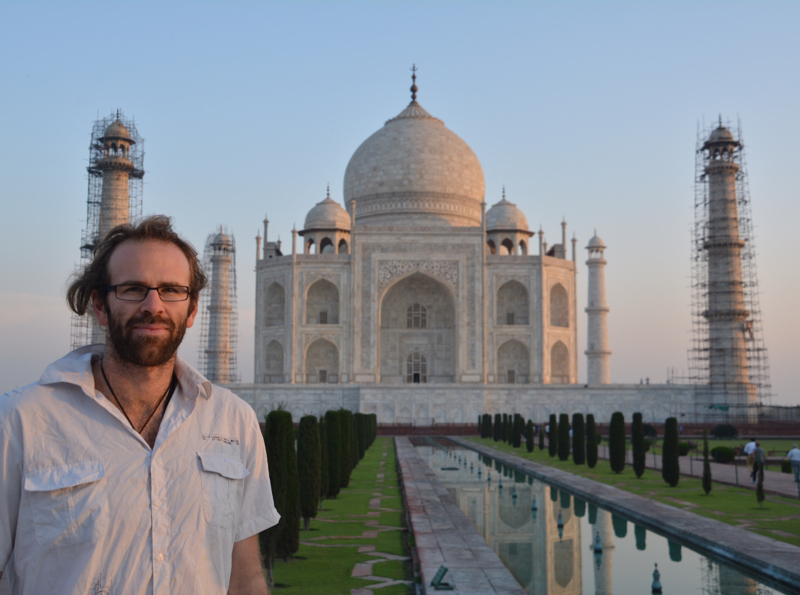
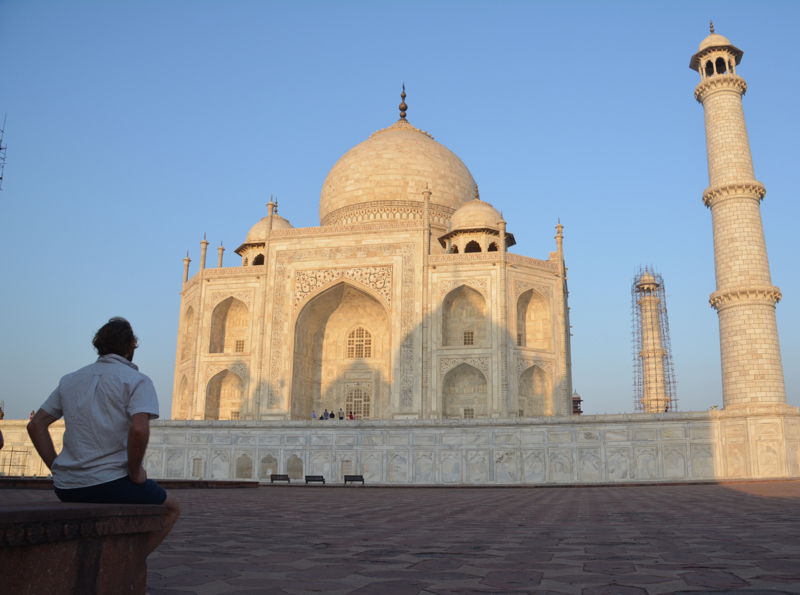
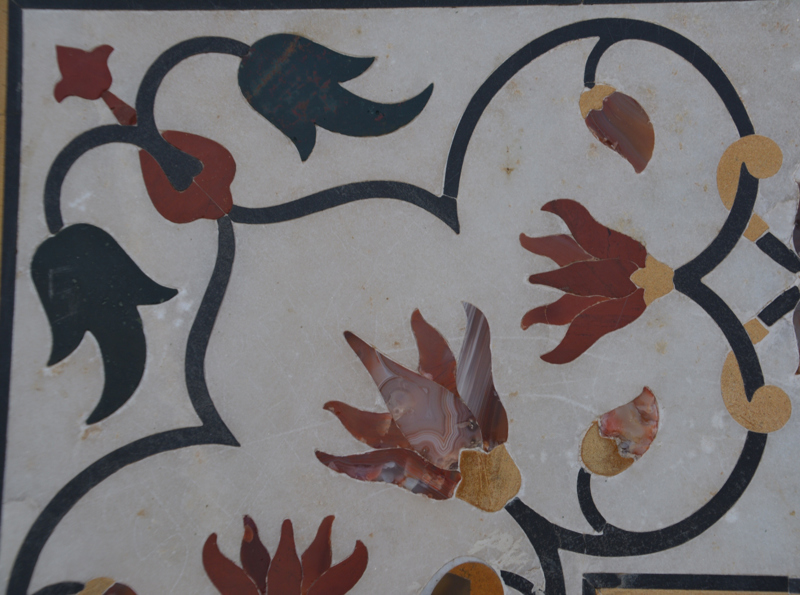
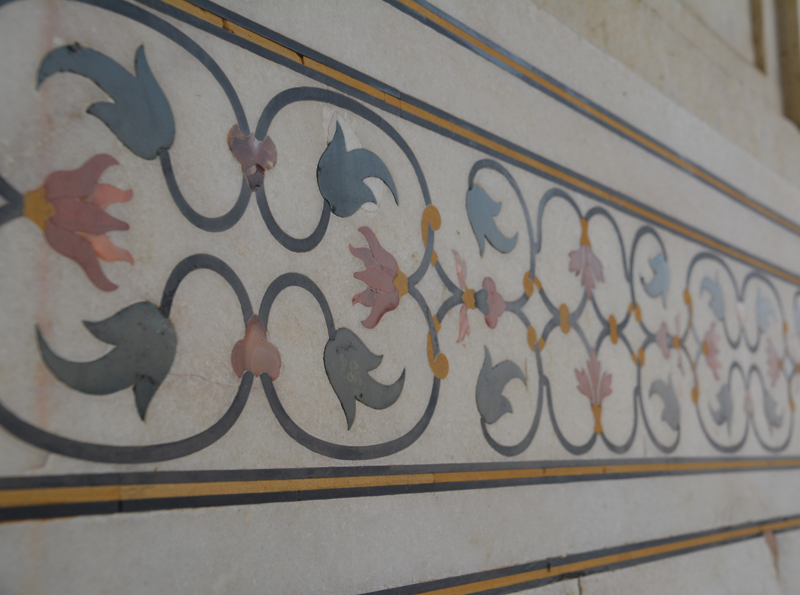
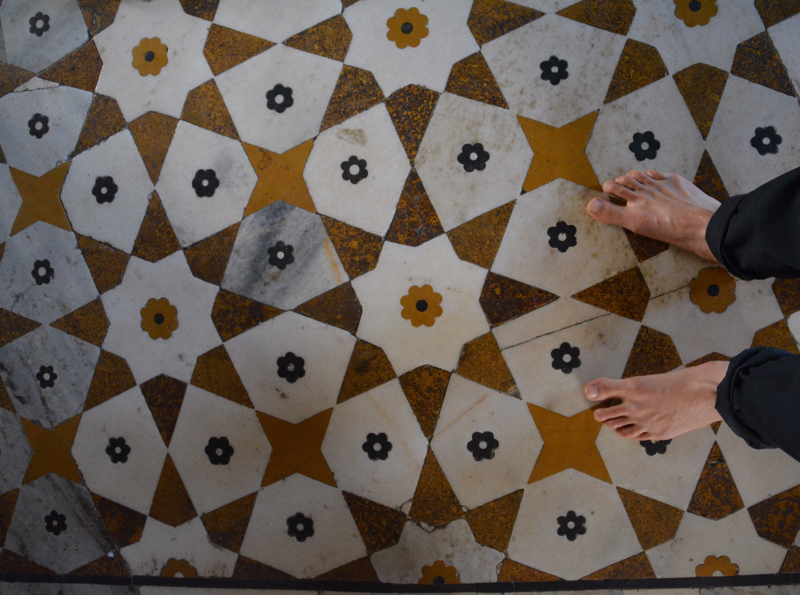
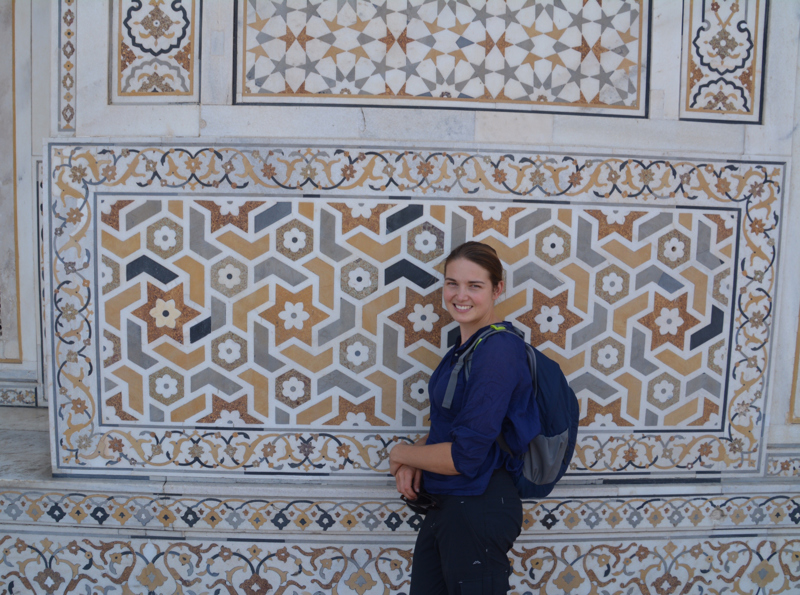
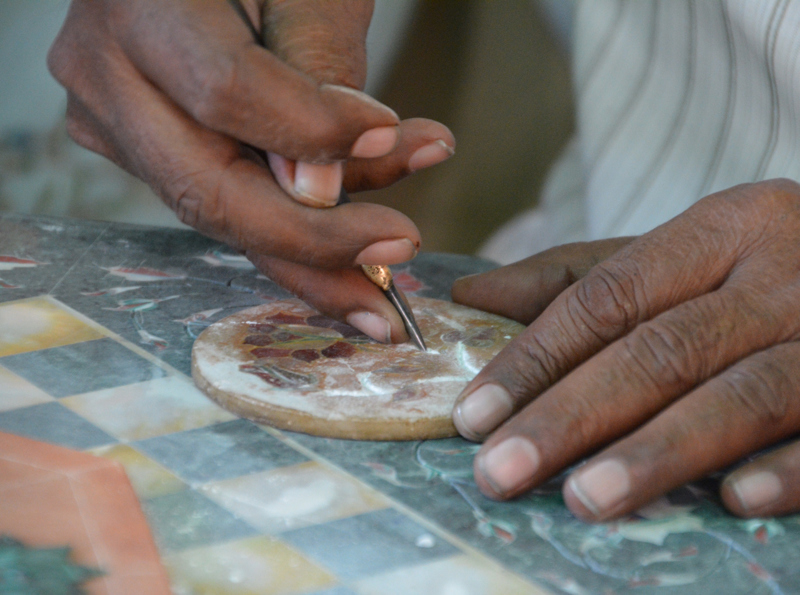
resources, a quick google search told us the cost was equivalent to US $830 million today, and that's with a lot of slave labour. Whilst I heard one man assure his girlfriend that had he the money her would do the same for her, Liam assured me Shan Jahan was mad. Fortunately,I agree. That being said, it is a magnificent, and I didn't leave disappointed.
Our rickshaw driver took us from sight to sight and having someone consistent was a real blessing as the hassle factor in Agra could be pretty unbearable. The Tomb of I'timād-ud-Daulaas was a highlight for me. Aptly described as ‘the baby taj’, it is a much smaller building but with a very similar design to the Taj Mahal. It was built about 10 years before, and has many architectural and decorative similarities. The inlay designs are stunning and most of the building is covered in them, with different types of rock being used instead of precious stones. Liams biggest concern was how much recreating them for a kitchen is going to cost him when we get home.
Before boarding our train, we did a little bit of what Liam called retail therapy (restraint therapy in my books). Sorry mum, I won't be bringing home any carpets. We were glad to be leaving the hustle and bustle of Agra behind us. If we'd known what Jaipur had in store, we mightn't have been in such a hurry to leave.
1.
Kolkata to Darjeeling
2.
Darjeeling
3.
Darjeeling to Kurseong
4.
Kurseong to Varanasi
5.
Varanasi to Khajuraho
6.
Khajuraho to Agra
7.
Agra to Jaipur
8.
Jaipur to Pushkar
9.
Pushkar to Bundi
10.
Bundi to Jodhpur
11.
Jodhpur to Jaisalmer
12.
Jaisalmer to Delhi
13.
Delhi to London
14.
London to Waterford
15.
Waterford to Tralee
16.
Tralee to Westport
17.
Westport to Mullingar
18.
Mullingar to Donegal
19.
Donegal to Belfast
20.
Belfast to Dublin
21.
Dublin to Berlin
22.
Berlin to Marburg
23.
Marburg to Munich
24.
Munich to Salzburg
25.
Salzburg to Ljubljana
26.
Ljubilana to Lake Bled and Postojna
27.
Postojna to Croatia part one
28.
Croatia to Bosnia-Hercegovina
29.
Bosnia to Croatia part 2
30.
Croatia to Italy